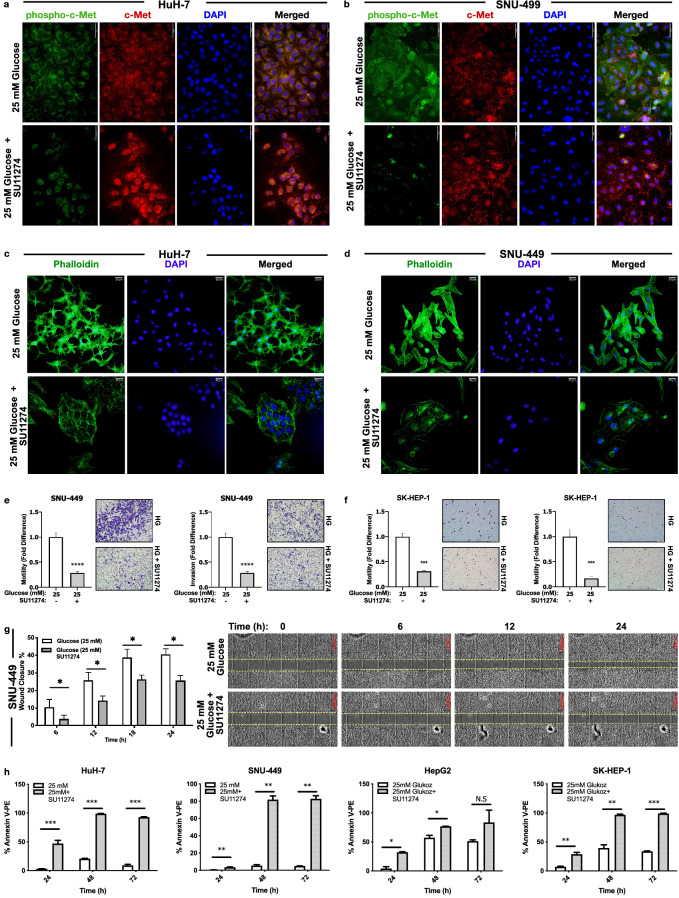Figure 4.
High glucose increased cell aggressiveness reversed by inhibition of c-Met activation. Representative images showing protein expression of c-Met (Alexa-594 labeled) and phospho-Met (Y1234/Y1235), (Alexa-488 labelled) in (a) HuH-7 and (b) SNU-449 cells. Representative images showing F-actin stress fibrils (Alexa-488-conjugated Phalloidin labelled) in (c) HuH-7 and (d) SNU-449 cells. Cell nucleus is counterstained with DAPI staining. Graphical presentation of fold change of (e) motility and invasion in SNU-449 and (f) SK-HEP-1 cells in trans-well motility and invasion assays. Graphical presentation of (g) wound closure percentage of SNU-449 cells after 6-, 12-, 18- and 24-h incubation. Wound-healing graphical presentation represents 3 independent experiments. Combined microscopic images of SNU-449 wound healing assay from automated microscope for real-time live cell imaging on 0, 6th, 12th and 24th hours. Percentage of Annexin-V/PI positive HCC cells (h) in high glucose and c-Met inhibition conditions measured by flow cytometry. All data represented in this figure are from indicated HCC cells that are cultured with high-glucose control and high-glucose + SU11274 (2.5 µM) supplemented conditions. All graphs of experiments are presented as the mean ± SEM of at least 3 independent experiments. Statistical analyses were performed and graphs were generated using GraphPad Prism version 8.2.1 for MacOS, GraphPad Software, San Diego, California USA, https://www.graphpad.com. *p ≤ 0.05, ** p ≤ 0.01, *** p ≤ 0.001, **** p ≤ 0.0001.

